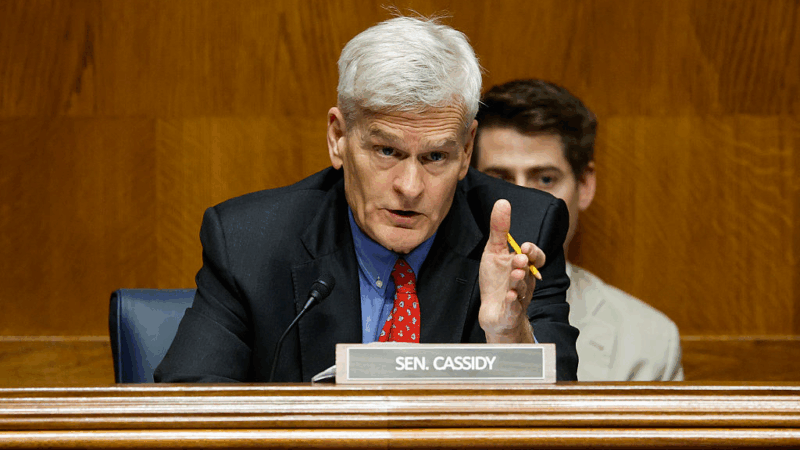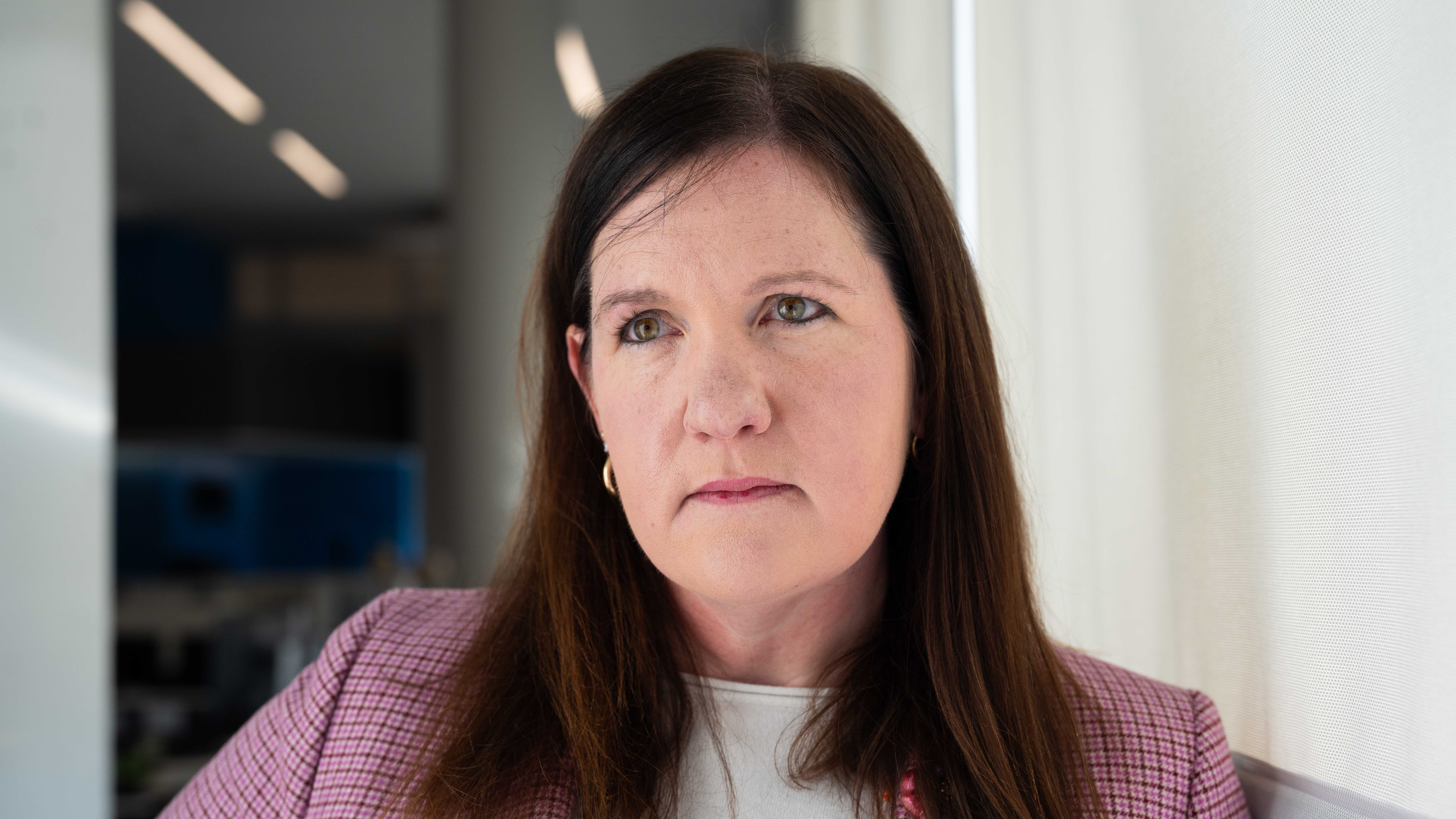Air Quality: Portland
Every two years Oregon drivers are required to get their vehicles inspected at testing stations like this one, run by the Oregon Department of Environmental Quality. Here at this DEQ Vehicle Inspection station just outside Portland, a technician measures levels of carbon monoxide and NOX from the tailpipe of a 1980s era sedan. Once her car passes the test, the driver can renew her vehicle registration for another two-year period.
The Clean Air Act, which was enacted in the early 1970s, directs the Environmental Protection Agency to establish legal limits for six air pollutants and mandates that every state meet these limitations. Back in the 70s the air in Portland often exceeded EPA limits. According to Susan Drake, an air quality specialist at DEQ, Portland’s geography exacerbates its potential for air pollution.
“We have a unique geographic set up here. We’ve got the Coast Range and the Cascade Mountains, which create a bowl where the pollution can really build up.”
“There was a build up of air pollution that you could visibly see.”
Marcia Danab is with the Oregon Department of Environmental Quality.
“and it impaired being able to see the mountains and also had health effects, especially for people with asthma.”
(Drake)”Back in the 70s and 80s when we began monitoring for air pollution we routinely violated the standard for ozone and for carbon monoxide.”
(Danab)”The main source of the pollution was vehicles, cars and trucks, and that’s why the vehicle inspection was the most important part of the plan to reduce air pollution.”
Oregon’s vehicle inspection program, which began in 1975, has helped reduce pollution in Portland, because it insures that at least once every two years drivers get their cars tuned up. According to Susan Drake with the DEQ, other factors have also helped clean up Portland’s air.
“During the 1980s the federal government put new technology requirements onto cars, things like catalytic converters, and this dramatically reduced the amount of pollution that they were producing. At the same time the federal government reformulated gasoline to make it less volatile and this resulted in less VOCs, or smog precursors going into the air.”
Cleaner gasoline and car emission controls have played a big role in cleaning up air quality in most cities around the country. But there is one thing that makes Portland unique.
(Drake)”I think a big part of what this region’s doing is an outstanding job at managing growth. We are trying to put people closer to the places where they work and play and this means that they’re driving less.”
(Fuglister) “Instead permitting new development to happen out in places where it’s just farmland or forestlands, we decided to draw a line around certain parts of the community and said, okay, we are going to grow and develop inside that line and not go outside of it.”
Jill Fuglister is co-director of the Coalition for a Livable Future, in Portland.
“By developing inside that line, we are building houses and stores and jobs all closer together so people drive less. We’re one of the rare places in the country where we’ve actually seen the amount that people are driving, it’s gone down.”
Groups like the Coalition for a Livable Future, or CLF, have helped shape Portland’s impressive network of mass transit, walking and bike paths. But Fuglister says something threatens to undo decades of planning that has made Portland the icon of livability: plans for a new 12-lane freeway bridge across the Columbia Rive. The proposed bridge would replace the current six lane bridge that connects Portland with the suburban community of Vancouver, Washington. If Portland is a poster child for smart growth, Vancouver, Washington is an example of sprawl. Business leaders in Portland and Vancouver emphatically support building this massive bridge, but critics of the plan, like CLF’s Jill Fuglister, believe that a 12-lane bridge will encourage more sprawl across the river from Portland.
“We know, because we’ve seen this across the country, that any time we add more capacity to freeways that more cars will drive on those freeways. And so we have more cars, more tailpipes, more pollution in our communities.”
And today it’s not just air pollution that is of concern.”
“This investment that we’re being asked to consider as a community is a 4.2 billion dollar investment in what we think is something that’s going to increase the amount of global warming pollution in our communities, not only global warming pollution but pollutants of all kinds that come from motor vehicles.”
In the freeway building glory days of the past business leaders would have had an easy time getting this proposal approved. But much has changed in the Northwest and now groups like CLF have created a place for themselves at the decision-making table. Many of CLF’s key suggestions are being seriously considered, such as charging tolls on the new bridge and assuring lanes for bicycles, pedestrians and light rail. What is yet to be determined is a larger question: can you ease congestion and discourage sprawl and pollution at the same time?
After Texas ruling, Trump and Republicans head to 2026 with a redistricting edge
Trump has prompted a redistricting race as he tries to maintain Republican control of the House in the 2026 elections. Democrats have fewer options to counter, as the battle heads into next year.
How China, not the U.S., became the main climate solution story in 2025
The U.S. has become a "side character" in the global story of renewable energy, experts say. China dominates the sector, with positive implications for the climate and their economy.
Republicans push high deductible plans and health savings accounts
A Republican call to give Americans cash instead of health insurance subsidies revives an old idea that has left millions with medical debt.
Supreme Court to hear case that could vastly expand presidential powers
The Supreme Court hears arguments in a case about President Trump's firing of a Federal Trade Commissioner. At stake is a 90-year precedent limiting the president's power over independent agencies.
Zelenskyy heads to London for more Ukraine peace talks. Here’s what to know
The talks signal fresh support from European allies. But they follow stalled U.S. negotiations in Miami and comments from President Trump's son suggesting Washington is ready to pull back.
Tributes, not politics, play center stage as Trump hosts the Kennedy Center Honors
President Trump said he was closely involved with picking the honorees, and on Sunday he became the first president to host the Kennedy Center awards ceremony.







